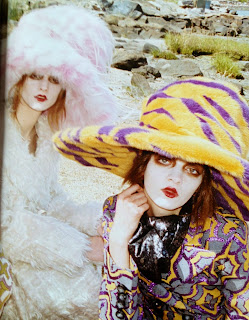CLARIFICATION: May 1, 2012
Dorfman Pacific is a Stockton-based hat wholesaler. Incorrect information appeared in a story and graphic in the print and initial online version of this article.
Dorfman Pacific is a Stockton-based hat wholesaler. Incorrect information appeared in a story and graphic in the print and initial online version of this article.
STOCKTON - There was a touch of reverence in John Callanan's tone as he held up a fine crocheted raffia hat.
At a glance
Location: 2615 Boeing Way, Stockton
History: The company was started by Arthur Hyman and Jack Dorfman in Oakland in 1921. In 1988, the distribution center relocated to Stockton to cut down on operating expenses.
President and CEO:Douglas Highsmith
Employees: 175 full time; about 30 temporary
"People don't understand the amount of work that goes into a hat," said Callanan, the vice president of design at Dorfman Pacific in Stockton.
"The palm tree grows in Madagascar. It's harvested," he said, explaining the long journey that led to the hat's $150 price tag. "The palm leaf is dried and pulled apart to the finest centimeter, and then it's hand-crocheted."
The hat is one of millions at Dorfman Pacific's wholesale distribution center in Stockton - some elaborate, with flowers and bright ribbons, and others more simple, like a cadet cap that sells for roughly $4.
Dorfman Pacific has about 20 brands in total, including Scala, Stetson, Tropical Trends and DPC.
When President and Chief Executive Douglas Highsmith took over, the company catered primarily to Northern California. It has showrooms across the United States and exports to international locations like Japan, China, Australia, South America and Europe.
Highsmith started out as a salesman in 1973, working his way up the ladder and eventually buying the business.
"It's been my life. It's my only job," he said. "We have more hats in this warehouse than anybody else in the world."
Even as he sorted through stacks of hats to decide what would be added to the 2013 spring/summer line and what would be discontinued, Callanan was already thinking of the possibilities for the following autumn.
"You have classic shapes. It's really the trims that change a lot," he said. "I'm definitely seeing a lot more fashion trims at the moment, and a lot more color."
He finds inspiration in everything from bracelets and hair accessories to popular television programs like AMC's "Mad Men."
"To me, a line is never really finished. I'm always thinking. I'm walking around and looking," he said.

































































